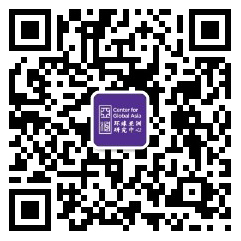2018 | Eurasian Connections | Ke Zhang
Ke Zhang Fudan University Biography ZHANG Ke is an associate professor in the Department of History, and serves as assistant director of the Asia Research Center at Fudan University. He received his Ph.D. from Fudan University in 2009. His research interests include modern Chinese intellectual history, conceptual history and the global history of cultural exchange. He is the author of The Conceptual History of ‘Humanism’ in Modern China (2015, in Chinese) and the co-editor of The Production of Knowledge and the Politics of Culture in Modern China (2014, in Chinese). He is currently working on a book project on the Sino-Indian cultural relations during the late Qing period. 「 The Changing Image of Martin Luther in Late Qing China 」 Among the famous personalities in European history, Martin Luther is a common figure who appears in the Chinese literature composed during the late Qing dynasty. However, there was a transformation of his image in China due to the role of Christian missionaries and the reform movement in Qing China. Chinese intellectuals began to understand Martin Luther in more detail only after the Opium War, but until the 1890s his image among them was mostly negative as they thought Luther was responsible for the abruption of the Christian church. Meanwhile, the protestant missionaries praised Luther’s achievements in reforming the church and focused on shaping his image as an “reformer”. During the 1898 Reform Movement in Qing China, intellectuals such as Liang Qichao and Tan Sitong used Luther as a key historical figure, sought legitimacy for their reform movement, and repeatedly emphasized the significance of Luther to create a “myth”. The study of Luther’s mythological image is not only about exploring whether it is in line with the history of Christianity in Europe, but more importantly, about the actual purpose of these image creators and the specific Chinese historical



